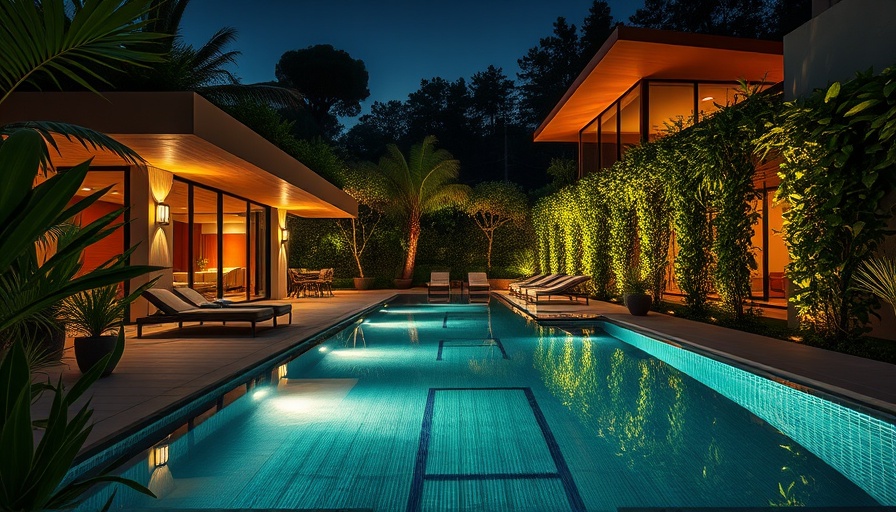
The Rise of Green Architecture: Why It Matters
As the world becomes more aware of environmental issues, green architecture has shifted from a trend to a crucial necessity. With a focus that has largely revolved around energy-efficient appliances and interior insulation, the spotlight is now transitioning towards how our homes interact with the outside world. It's not just about aesthetics; the exterior of a house plays a pivotal role in its ecological footprint and the overall comfort of its inhabitants.
Core Principles of Green Architecture
At its core, green architecture promotes environmental harmony, resource efficiency, and long-term durability. By selecting sustainable materials and minimizing human impact on nature, architects and builders create homes that respect their surroundings. Strategic orientation of homes allows them to harness natural elements like sunlight and wind, enhancing the overall functionality.
The Foundation of Sustainable Building Materials
The journey to a sustainable home begins with its materials. Traditional resources like concrete leave a hefty carbon footprint, while eco-friendly options provide equal strength with far less environmental burden. Choices like bamboo, reclaimed wood, and recycled metal are not only more sustainable but also possess a natural beauty that enhances curb appeal.
For roofs, options such as cool roofs and green roofs offer fantastic insulation properties. Cool roofs reflect sunlight and absorb less heat, minimizing energy consumption. On the other hand, green roofs, adorned in greenery, help with stormwater management and support local biodiversity.
Green Roofs and Living Walls: Nature’s Marvels
One of the most captivating aspects of green design is the integration of living systems. Green roofs and vertical gardens, often called living walls, enhance both the aesthetic and functional qualities of a building. By regulating indoor temperatures and managing stormwater runoff, these features transform the building's exterior into an eco-friendly wonder.
These living elements act as natural insulation, protecting roofs from harsh UV rays and offering a habitat for pollinators. Furthermore, these features beautify the space, contributing texture and color that breathe life into the architecture.
Harnessing Passive Design for Energy Efficiency
A key component of sustainable architecture lies in passive design principles. This approach utilizes the sun's energy for heating and lighting, reducing reliance on mechanical systems. Homes designed with passive solar techniques cleverly place windows, overhangs, and shading systems to optimize daylight and thermal performance.
External elements like pergolas and deciduous trees provide natural shade during summer months, thereby cooling the house without using energy-consuming air conditioning systems. This approach not only conserves energy but also creates a cozy living environment, reinforcing the quality of life for residents.
Creating Communities with Sustainable Connectivity
Beyond individual homes, green architecture fosters a sense of community. Developing neighborhoods that prioritize pedestrian pathways, natural parks, and communal gardens cultivates social connections. These elements encourage sustainable travel trends, enticing families to walk or bike to local amenities instead of relying solely on vehicles.
As a sustainable traveler, incorporating these elements into your home or community can significantly enhance your surroundings. Engaging with eco-friendly initiatives contributes to family health and happiness, laying a solid foundation for future generations.
The Emotional Connection to Sustainable Living
Sustainable architecture resonates on a personal level—an inviting home nurtures well-being for all its inhabitants. Families living in sustainably built homes often report feelings of joy and fulfillment, knowing their choices positively impact the environment. The idea that one’s home can contribute to a healthier planet creates a connection that inspires mindful living.
As you explore the world of green architecture, you'll discover how these designs not only beautify spaces but also promote health, sustainability, and harmony with nature.
Embrace the Future: Why It’s Time to Go Green
The future is a canvas of opportunity shaped by how we choose to build our homes and communities. By adopting green architectural practices, we can preserve our planet for generations to come. Whether you’re a sustainable traveler seeking eco-conscious accommodations or a homeowner looking to enhance your residence, understanding the principles of green architecture is essential. Incorporating these ideas into your life can foster a more sustainable lifestyle while boosting your family's future.
Let’s take action! As you consider your current living space, think about how these principles can enhance your home and community. Sustainable changes create a ripple effect, impacting not only your life but also the environment around you.
 Add Row
Add Row  Add
Add 




 Add Row
Add Row  Add
Add 

Write A Comment